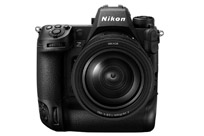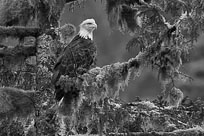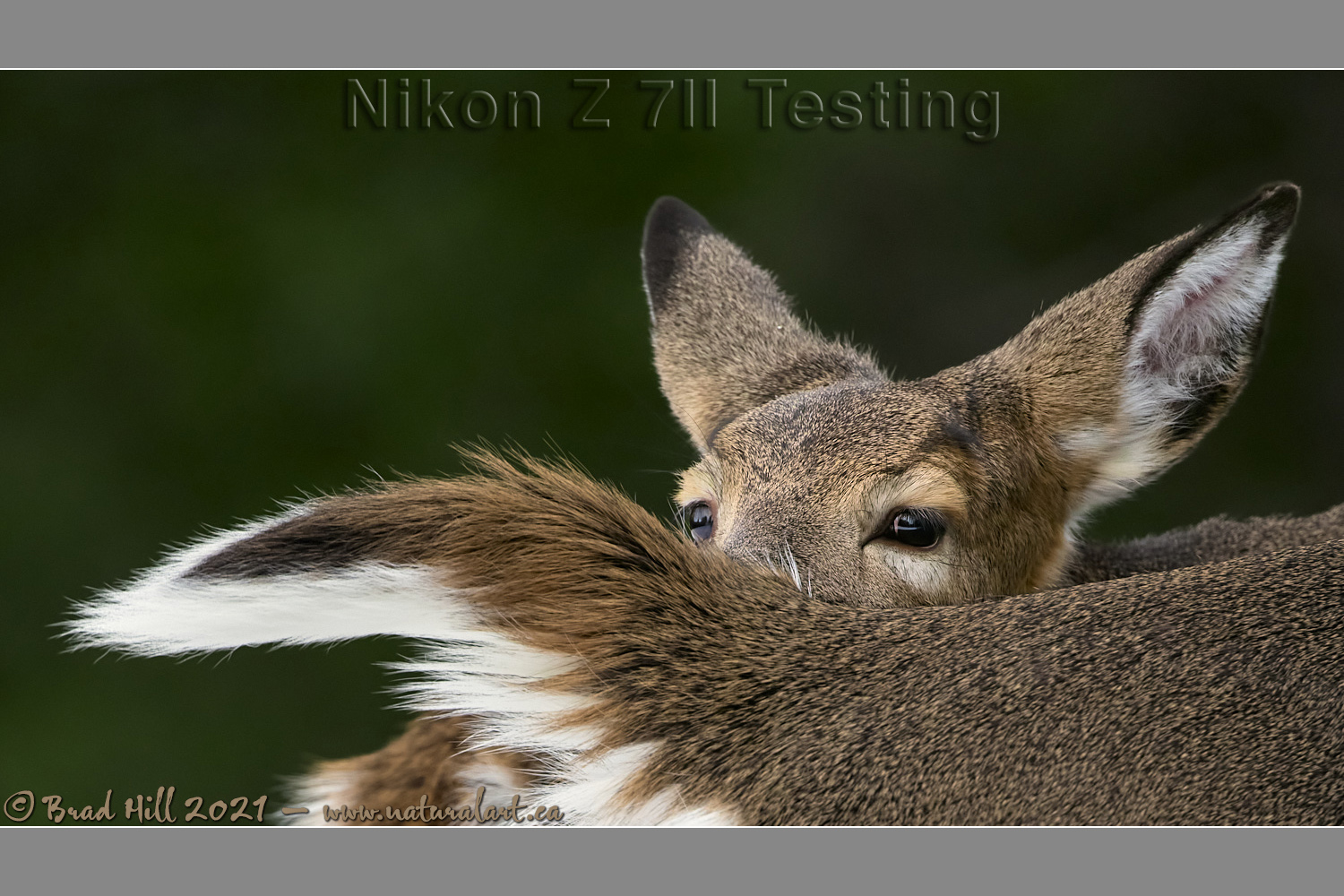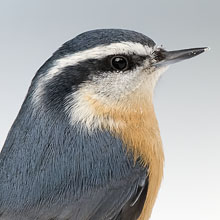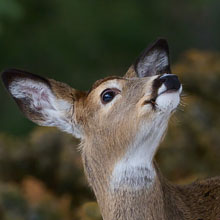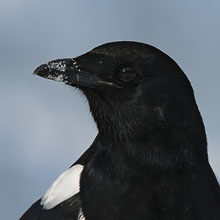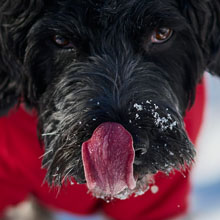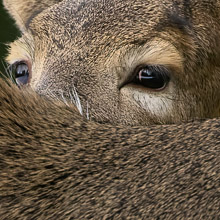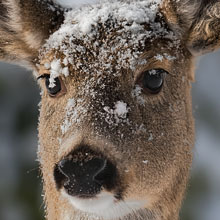Availability: Undetermined - Enquiries?
In the Field
Z 7II Testing - White Tail, Black Eye. Findlay Creek Region (East Kootenays), British Columbia, Canada. January 9, 2021.
This is a further installment on my experiences with shooting using the Nikon Z 7II. This tightly-framed shot of a female White-tailed Deer (i.e., a doe!) provides a nice example of a few things I really like about the autofocus system of the Z 7II.
When I captured this shot I wanted to focus precisely on the doe's eye in the hope that the sharpness of her eye (relative to the back of the deer or its bright white under tail) would draw the viewer's eye (and be the first thing the viewer looked at before exploring the image). At the time I was shooting my Z 7II paired up with a Nikkor 180-400mm with its built-in teleconverter engaged and at maximum focal length - so the image was captured at 560mm. So I didn't have a lot of DoF - or a lot of room for error. But, as I have been finding with ALL the lenses I use with the Z 7II (both Z-mount lenses and adapted F-mount lenses), the AF system focused precisely on the spot I wanted.
Now at first this may not seem like such a big deal - it's kinda what you expect from a high-end camera of any brand or type. However, keep in mind that I am finding that this extreme accuracy of focusing is found regardless of which of its 493 focus points you select, including way out in any of the extreme corners of the EVF. So with the Z 7II you never have to worry about focusing accuracy (or ending up with a "slightly soft" subject) if you position your subject closely to any of the edges of your viewfinder. And, of course, those focusing points go WAY closer to the edges and corner of your viewfinder than they do with any DSLR (Nikon or otherwise).
And, for those who like to use teleconverters with slightly "slower" lenses...you STILL don't have to worry about the accuracy of focusing of the Z 7II. For instance, put a 1.4x teleconverter on a 500mm f5.6E telephoto lens and you end up with a lens/TC combination that has an effective maximum aperture of f8. And, more importantly, you have a lens/TC combination that will stymie the AF system of many Nikon DSLR's and even makes the excellent AF system of the D6 less effective (only 15 of its most central 105 focus points are f8-compatible). But...all 493 of the focus points of the Z 7II work just fine (and are exceptionally accurate) with a lens with a maximum effective aperture of f8. So your Z 7II (or Z 6II) makes your teleconverters more versatile and useful than on any Nikon DSLR...which is a cool thing for a wildlife photographer when he/she needs to pair their 500mm PF with a 1.4x TC.
Because I know I will get the question if I don't mention it now - what about lens/TC combinations with an effective maximum aperture of f11? Well, the only lens/TC combination I have with that effective maximum aperture is a 500mm f5.6E PF plus TC-20EIII (2x) teleconverter...and I can say that the AF STILL works effectively (and is extremely accurate) with all 493 focus points. In the spirit of full disclosure, I should note that the AF system does slow down somewhat with this lens/TC combination in use. And I have not shot this combination enough to have an informed opinion of the image quality you obtain when shooting this lens/TC combination. But with a Z 7II (or Z 6II) you are NOT prevented by lack of AF compatibility from using it. And you will find that there is NO Nikon DSLR (including the D6) that can focus on a subject reliably (using ANY AF area mode) with a lens/TC combination with an effective maximum aperture of f11 (trust me, I've tried it).
Oh...and if you are looking for something negative to say or think about the Z 7II AF...I can guarantee you that it will NOT lock on the eye of a bee at a distance of 500 meters (geez...what a useless camera, eh?). ;-)
Here's a larger version (2400 pixel) of this White-tail doe:
• White Tail, Black Eye: Download 2400 pixel image (JPEG: 1.3 MB)
ADDITIONAL NOTES:
1. This image - in all resolutions - is protected by copyright. I'm fine with personal uses of them (including use as desktop backgrounds or screensavers on your own computer), but unauthorized commercial use of the image is prohibited by law. Thanks in advance for respecting my copyright!
2. Like all photographs on this website, this image was captured following the strict ethical guidelines described in The Wildlife FIRST! Principles of Photographer Conduct. I encourage all wildlife photographers to always put the welfare of their subjects above the value of their photographs.
Behind the Camera
Z 7II Testing - White Tail, Black Eye. Findlay Creek Region (East Kootenays), British Columbia, Canada. January 9, 2021.
Digital Capture; Compressed RAW (NEF) 14-bit format; ISO 900.
Nikon Z 7II paired with Nikkor 180-400mm f4E at 560mm (built-in 1.4x TC engaged). Hand-held. VR on and in Sport mode. Single Point AF area mode.
1/640s @ f7.1; -0.67 stop compensation from matrix-metered exposure setting.
At the Computer
Z 7II Testing - White Tail, Black Eye. Findlay Creek Region (East Kootenays), British Columbia, Canada. January 9, 2021.
RAW Conversion to 16-bit PSD file (and JPEG files for web use), including all global and selective adjustments, using Phase One's Capture One Pro 21. Global adjustments limited to a tweak to highlight retrieval and blacks recovery. Selective local adjustments performed using Capture One Pro's layers and masking tools. In this case selective adjustments were made on 8 separate layers and included one or more tweaks to whites, blacks, brightness clarity, color saturation, and structure (it's a Capture One thing).
Photoshop modifications were limited to the insertion of the watermark and/or text.
Conservation
Z 7II Testing - White Tail, Black Eye. Findlay Creek Region (East Kootenays), British Columbia, Canada. January 9, 2021.
Species Status in Canada*: This species is not designated as at risk.
White-tailed Deer (Odocoileus virginianus) are one of the most widely distributed mammals in North America - they can be found in virtually all of southern Canada and in most of the American states. While whitetails are common now, in the late 1800's they were in serious risk of extinction - their populations had been reduced from about 40 million (across North America) to under 500,000. The conservation effort to return whitetails to numbers sufficient for long-term survival was massive and included strict harvest regulations, intense management, reintroductions, and habitat protection. Today, most populations in the United States do not represent original stock and the distinction of most historical subspecies is uncertain.
Whitetails resemble Mule Deer quite closely, and the two species overlap in distribution in western North America. The two species tend to prefer different habitats, with whitetails occupying more heavily forested land and along river valley bottoms, while muleys tend to prefer uplands and montane areas. On rare occasions, the two species will interbreed. Occasionally the offspring are fertile, but in most cases they are sterile.
This whitetail fawn was photographed in the Columbia Valley of the East Kootenays. While this species is not currently considered at risk, many ecosystems within the Columbia Valley face development pressure, including pressure from logging operations.
*as determined by COSEWIC: The Committee on the Status of Endangered Wildlife in Canada









